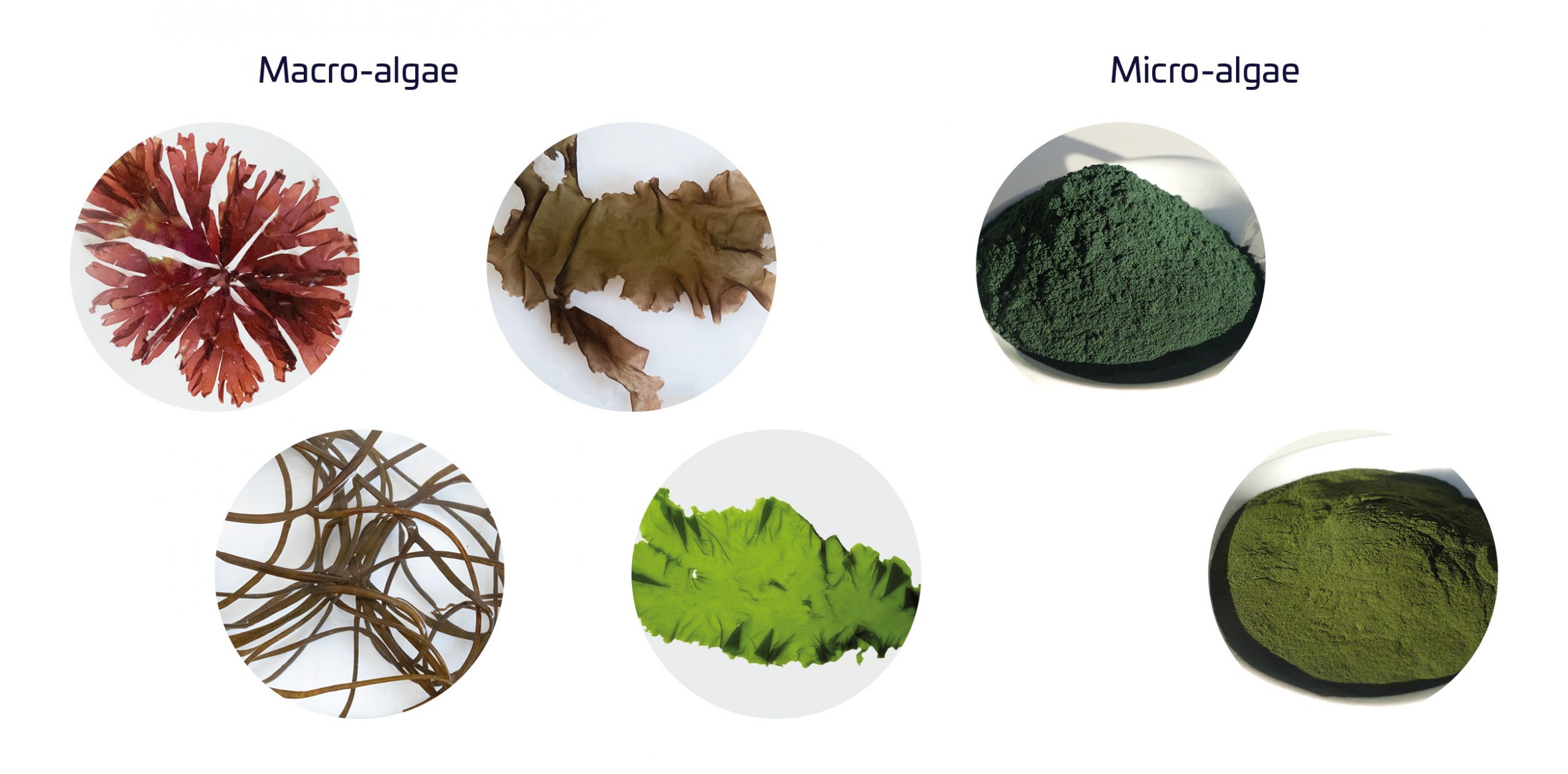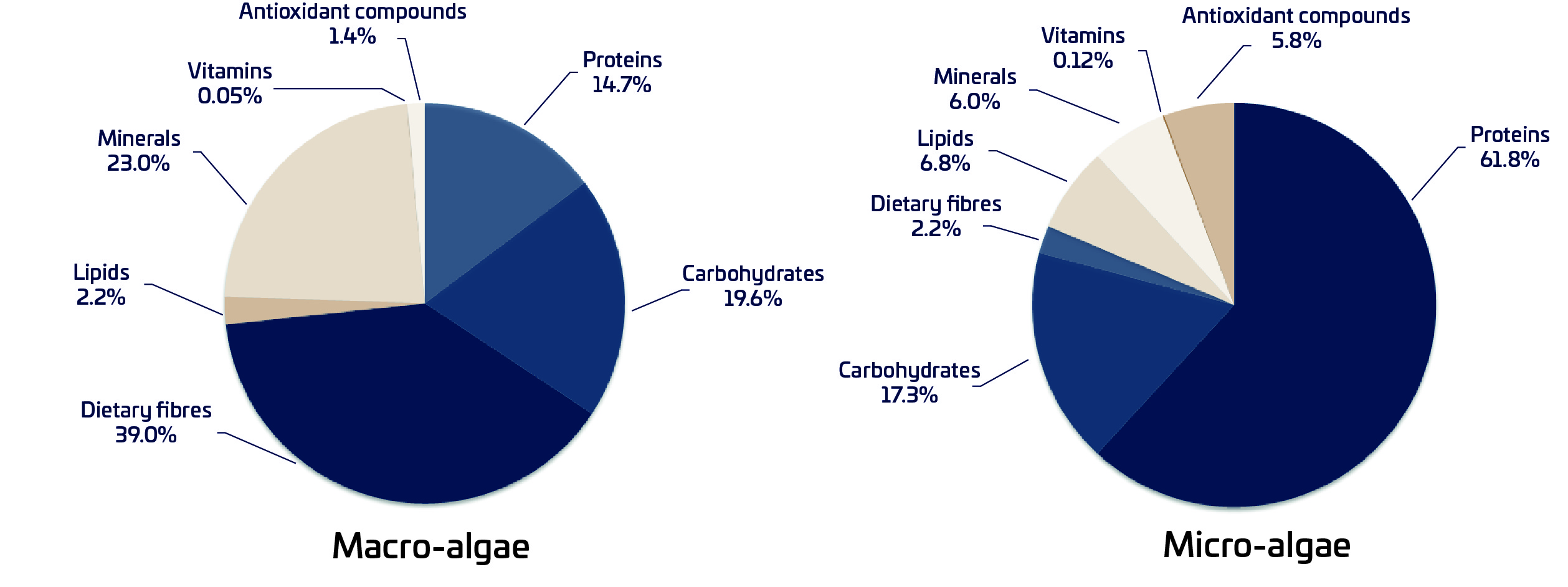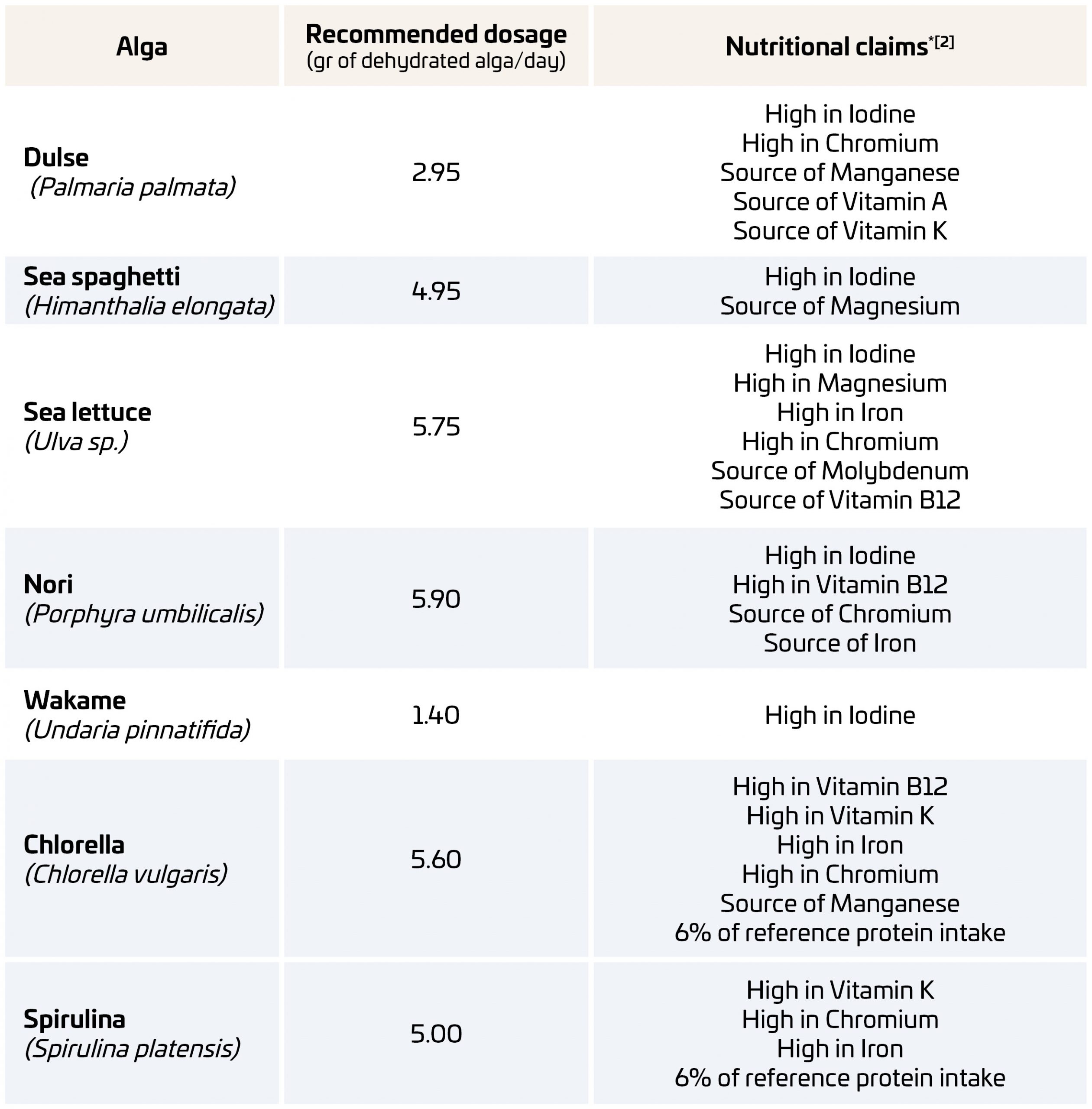In Asia, algae have been used for millennia in human food. It is then thanks to tourism and to economic and cultural openness that Western countries have discovered and adopted this new culinary food.
Currently in Europe, algae are mainly used in the form of extracts by the texturising industry (sodium alginate, agar and carrageenan) for their gelling or thickening properties. However, France is playing a leading role in the promotion of food algae.
Indeed, seaweed meets the expectations of consumers, who, concerned about their diet, want natural foods, sustainably produced, with nutritional interest and which are innovative. A survey conducted in 2013 revealed that 58% of French people consume algae, which they consider healthy and tasty [1]. The algae are marketed in dehydrated or wet form, or else already incorporated in food preparations.
Composition of algae
There are two categories of algae: macroalgae (Wakame, Dulse, Nori, Sea lettuce, Sea spaghetti…) , which are easily found in the wild on the coast of Bretagne for example (area in north-west France), and microalgae (Spirulina, Chlorella…), which are invisible to the naked eye and are generally cultivated in ponds.
As the graph below illustrates, these two categories of algae have very different compositions:
Representation of the average nutritional composition[2] of:

As the graph below illustrates, these two categories of algae have very different compositions:
Representation of the average nutritional composition[2] of:

Macroalgae contain mostly fibres (40%) and minerals (23%), while microalgae have a very high protein content (60% on average). They also contain a multitude of functional compounds: antioxidants, vitamins and essential fatty acids (omega-3).
Nutritional qualities of algae
The unique and extremely complete composition of algae means that no other terrestrial plant provides so many nutrients simultaneously. Thus, only a few grams of algae in our diet are sufficient to cover many daily needs:
 * Nutritional claims determined according to Annex XIII of REGULATION (EU) No 1169/2011 for products other than beverages.
* Nutritional claims determined according to Annex XIII of REGULATION (EU) No 1169/2011 for products other than beverages.
Beneficial effects on health
Consuming algae, in addition to its nutritional role, also helps to prevent certain diseases or deficiencies.
Thus, they have been consumed for centuries for their medicinal virtues, linked to the originality of their compounds [3, 4, 5, 6]:
- Their fibres helps digestion and slows down the absorption of sugars (an advantage for diabetics)
- Their proteins (phycobiliproteins) and fats (sterols, omega-3) contribute to the prevention of diseases such as cancer and cardiovascular diseases.
- The minerals are in a bioavailable form, and iodine, one of the most present, plays a role in reducing the risk of obesity and regulates the overall metabolism of our body.
- Their complex sugars (sulphated polysaccharides) have antiviral properties.
- Their pigments (carotenoids) have antioxidant properties.
The mechanisms behind these benefits are not clearly understood, but research has identified that the major benefit of algae comes from the synergy of their compounds.
Algae are therefore a real “health food” and incorporating them into our diet is a source of benefits.
Bibliography:
[1] LE BRAS Quentin, RITTER Léa, FASQUEL Dimitri, LESUEUR Marie, LUCAS Sterenn, GOUIN Stéphane. 2014. Etude de la consommation des algues alimentaires en France. Programme IDEALG Phase 1. Etude nationale. Les publications du Pôle halieutique AGROCAMPUS OUEST n°35, 72 p.
[2] Composition et allégations nutritionnelles calculées à partir des données nutritionnelles publiées par le CEVA (Centre d’Etude et de Valorisation des Algues) et de données internes.
[3] Funahashi H, Imai T, Mase T, Sekiya M, Yokoi K, Hayashi H, Shibata A, Hayashi T, Nishikawa M, Suda N, Hibi Y, Mizuno Y, Tsukamura K, Hayakawa A, Tanuma S. Seaweed prevents breast cancer? Jpn J Cancer Res. 2001 May;92(5):483-7. Doi: 10.1111/j.1349-7006.2001.tb01119.x.
[4] Murphy, Catherine & Hotchkiss, Sarah & Worthington, Jenny & mckeown, Stephanie. (2014). The potential of seaweed as a source of drugs for use in cancer chemotherapy. Journal of Applied Phycology. 10.1007/s10811-014-0245-2.
[5] MARFAING Helene & LERAT Yannick. (2007). Les algues ont-elles une place en nutrition ?. Phytothérapie. 5. 2-5. 10.1007/s10298-007-0227-5.
[6] MOURITSEN O. G. 2015. Algues marines – Propriétés, usages, recettes. Paris, Éditions Delachaux et Niestlé, 304 p.
